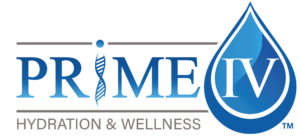Enjoy a limited-time welcome discount on your first visit!
Offers vary by location.
Enjoy a limited-time welcome discount on your first visit!
Offers vary by location.

Participating in regular and strenuous physical activity, such as working out, is an important part of living a healthy life but if you find yourself struggling with recovery after a tough workout, it can feel a bit disheartening. If you have been struggling with recovering after working out, this is the information that you need. Here are five post-workout recovery solutions that you probably do not know about.
In order to understand what happens to your body after you exercise, you must first understand what occurs in your body during periods of physical stress. When you exercise or otherwise physically exert yourself, your body works to supply your muscles and organs with oxygen and nutrients. It does this by increasing your heart rate so that your blood can move more oxygen-rich blood to the muscles that are being used. Your muscles start to work through your body’s stored glucose, which is the main sugar that can be found in blood. These supplies of glucose are expended fairly quickly, so your heart pumps more blood into your muscles to compensate. When you exercise, you will start creating tiny rips and tears inside your muscle fibers. These microtears will heal as time passes, making the affected muscles bigger and stronger. During the microtear healing process, inflammation can cause discomfort and pain in the area, making movement painful and difficult.
Related: 5 Tips for Building and Increasing Muscle Mass
Every individual who is serious about their health and fitness should have a solid post-recovery plan so they can get the most out of their workouts. Here are five of our favorite post-recovery solutions that will keep you working like a well-oiled machine in the gym.
We know the last thing you want to do after you crush a workout is stay in your sweaty clothes, but taking the time to properly cool down your body after getting sweaty is a great way to start off your post-workout recovery. Instead of jumping off the treadmill or the track after a long run and calling it a day, allow your body to cool down by slowing down to a jog for a few minutes, followed by a brisk walk until your heart rate returns to a normal pace. This will minimize the inflammation and the amount of fluids from pooling in your joints and muscles, which can cause pain and delay the healing and recovery process.
Not sure if IV hydration and treatment is right for you? Learn more about the benefits and how they can make you look and feel great!
Make sure you fuel your body properly so it has all the nutrients it needs to rebuild itself stronger. You will want to make sure you eat plenty of protein from lean sources such as chicken breast, egg whites, and tofu. Proteins are like the basic building blocks your body uses to create muscle, so make sure you take in plenty to repair those microtears.
Related: Suffer From A Sport Injury? Here Is a Solution For Faster Recovery!
Flexibility is a key component of strength training, so do not neglect this important training aspect. Wake up a few minutes early so that you can stretch the life into those muscles and try your best to turn it into a regular routine. Stretching out in the morning will help you release any tension or fluid buildup that you may have accumulated overnight, reducing any pain and inflammation.
Although getting another workout in when your body is stiff, sore, and suffering might sound like a crazy idea to some, some light exercise can be the best way to get the blood moving and promote recovery. If your body is still recovering when it’s time for your next work out, instead of hitting your usual heavy and strenuous routine, try going light and focusing on building the mind-muscle connection. This will allow you to keep the blood circulating and give it a chance to drain any waste from your muscles that cause discomfort.
Related: 5 News Ways to Regain Strength After Surgery
If there were only one post-workout tip that we could give you, it would be to make sure you are staying hydrated before, during, and especially after your workouts. Drinking water helps your body to flush out toxins and helps your body move vital nutrients to your cells. Making sure you are properly hydrated can help reduce the amount of soreness and tightness you feel in your muscles. Although drinking plenty of water is the preferred method of staying hydrated, there can be times when your body falls behind on its fluid intake and starts to suffer the effects of dehydration. Suffering from dehydration while your muscles are recovering can significantly impact the way that your body processes protein and builds muscle. If you want to make sure that your body is adequately hydrated for any killer workout that may come your way, you will want to make sure to include IV hydration therapy in your post-recovery toolkit. IV hydration therapy delivers refreshing and replenishing fluids along with electrolytes to rapidly restore your body to its optimal muscle-building state.
Discover the ultimate in hydration and wellness with our VIP Intro Offer. Book your IV therapy at a location near you and start feeling your best today.
We only grow our muscles when we rest and recover, but sometimes, our bodies need a little help. When your body starts to recover a bit more slowly than it used to or just want to give your body a boost, IV hydration therapy is the most effective and rapid post-recovery tool for champion athletes and weekend warriors alike.